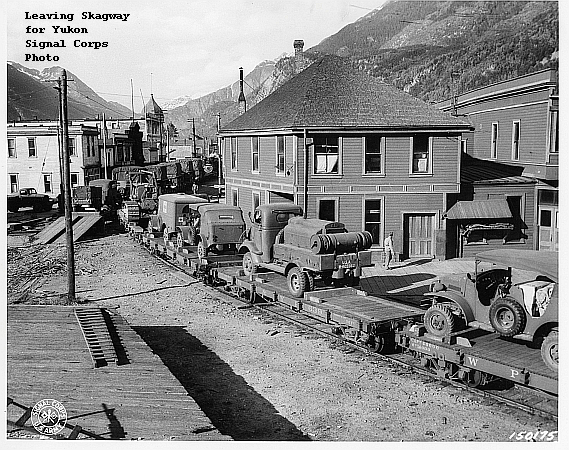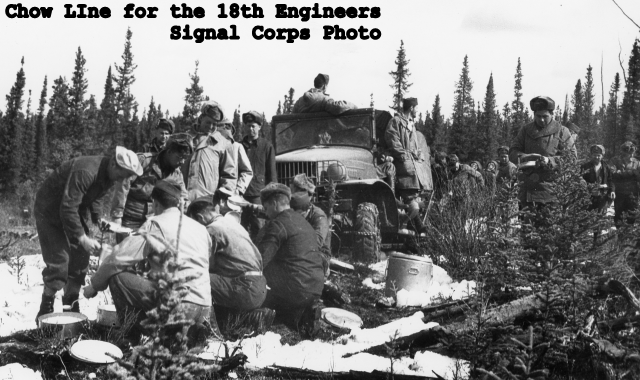
The 18th Combat Engineers, a crack outfit, came early to the Alaska Highway project. They came up the Inland Passage to Skagway, boarded the WP&YR and invaded Whitehorse in April. Their heavy equipment came up from Skagway in May. The only bright spot in General Hoge’s firmament, the 18th immediately headed north out of Whitehorse, building road.
The second platoon of Company F crossed the frozen Takhini River on the 19th. When a snowstorm quickly followed by a thaw rendered the Takhini crossing more difficult, the 73rd Pontoon Engineers lashed a pontoon bridge across it. As equipment came up on WP&YT flatcars. The companies grabbed it and moved out across the new Takhini River bridge onto the road–“two ruts to nowhere” and a “damned hard thing to ride over.

General Hoge had surveyors out mapping the route. The bulldozers actually passed them, got ahead… “going lickety cut. . .trees just plop, plop, plop while they drove dozers right straight through. . .following their noses. . .their survey crew caught up with the dozers. . .and put out big stakes. . .but the [dozer] operators made their [own] choice for the road.”
Fifty-nine miles out of Whitehorse, the third platoon of Company C built Jo-Jo River Bridge, forty five feet long, sixteen feet wide and about twelve feet above the river in just ten hours.
They rebuilt the old bridge over Aishihik River; renamed it the Stockton Bridge.

Their road had more “curves than Hollywood”. It was faster to build around a hill than through it. But at the end of May, the 18th engineers occupied a sixty five mile corridor north through Yukon from Whitehorse.
More on the Stockton River Bridge